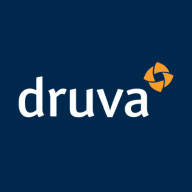

Druva Phoenix and Nutanix Disaster Recovery as a Service (DRaaS) are competitive in the cloud-based disaster recovery market. Druva Phoenix has a slight advantage in data protection and recovery automation, while Nutanix DRaaS offers superior integrated backup and rapid failover capabilities.
Features: Druva Phoenix offers cloud-native backup, automated recovery testing, and centralized management, catering to organizations focused on multi-location data protection. Nutanix DRaaS provides seamless integration with other Nutanix services, rapid failover, and backup within a unified interface, optimizing scalability and infrastructure efficiency.
Room for Improvement: Druva Phoenix could enhance its limited ransomware features, broaden its integration beyond VMs, and refine AI analytics for better utility. Nutanix DRaaS could aim for reduced initial setup time, streamlined compatibility beyond Nutanix environments, and a more intuitive interface to enhance user experience.
Ease of Deployment and Customer Service: Druva Phoenix facilitates straightforward cloud deployment and responsive support for varied enterprises. Nutanix DRaaS, despite requiring more initial setup, integrates effectively into existing Nutanix ecosystems and provides extensive support for complex technical needs.
Pricing and ROI: Druva Phoenix offers a cost-effective subscription model, promising a quicker ROI for diverse organizations. Nutanix DRaaS, though involving higher upfront costs, delivers justified long-term benefits through scalable and integrated solutions.


Druva Phoenix is a comprehensive cloud-based data protection and management solution that enables organizations to securely backup, recover, and manage their data across endpoints, physical servers, virtual machines, and cloud applications. With its scalable and flexible architecture, Druva Phoenix simplifies data protection and eliminates the need for traditional backup infrastructure.
By leveraging the power of the cloud, Druva Phoenix offers organizations a cost-effective and efficient way to protect their critical data. It provides automated backup and recovery capabilities, ensuring that data is always protected and easily recoverable in the event of a disaster or data loss. With its global deduplication and compression technology, Druva Phoenix minimizes storage requirements and reduces costs.
Druva Phoenix also offers advanced features such as point-in-time recovery, allowing organizations to restore data to a specific point in time, and granular file-level recovery, enabling users to recover individual files or folders. Its intuitive web-based console provides a centralized view of all protected data, making it easy to manage and monitor backups across the entire organization.
In addition to data protection, Druva Phoenix offers comprehensive data management capabilities. It enables organizations to gain insights into their data through advanced analytics and reporting, helping them make informed decisions and optimize their storage resources. Druva Phoenix also supports legal and compliance requirements by providing eDiscovery capabilities and ensuring data is retained and disposed of according to regulatory guidelines.
With its cloud-native architecture, Druva Phoenix offers organizations the flexibility to protect and manage their data across a wide range of environments, including on-premises, remote offices, and cloud applications such as Microsoft 365 and Google Workspace. It seamlessly integrates with popular cloud platforms like AWS and Azure, allowing organizations to leverage their existing cloud investments.
We monitor all Disaster Recovery as a Service reviews to prevent fraudulent reviews and keep review quality high. We do not post reviews by company employees or direct competitors. We validate each review for authenticity via cross-reference with LinkedIn, and personal follow-up with the reviewer when necessary.